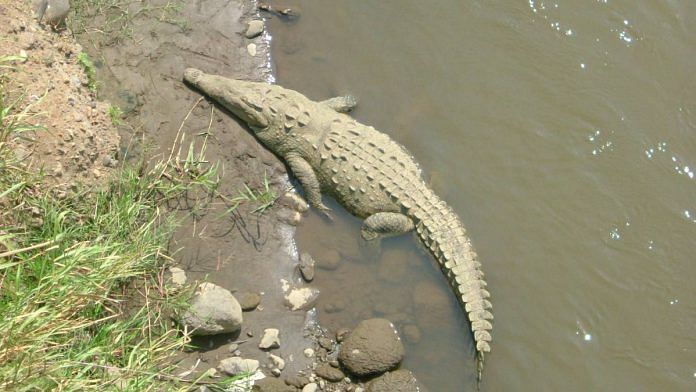New Delhi: A solitary life in a Costa Rica reptile park did not stop this female crocodile with no male partner from experiencing a virgin birth. Significantly, it’s the first time such reproduction has been recorded in a captive animal of the American crocodile (Crocodylus acutus) species, proving that virgin births are not in the realm of mythology or the Jurassic Park films alone.
In Jurassic Park, one of the characters had rejected the idea that the dinosaurs in the theme park couldn’t reproduce since they had been engineered to be all females. “Life finds a way,” the character, Ian Malcolm, a mathematician specialising in chaos theory, had said. Subsequent findings of birth at Jurassic Park proved Malcolm right.
Details of the virgin birth at the Costa Rica zoo were published in a science journal last week.
The ability of sexually reproducing without males is not new in the animal kingdom, and has been previously observed in snakes and lizards and some types of fish such as sharks, rays and sawfish. It’s called facultative parthenogenesis (FP), where the offspring only has DNA from the mother. However, this is the first time that such an occurrence has been documented in Crocodilia order, which includes mostly large, predatory, semiaquatic reptiles, such as crocodiles, alligators and gharials.
According to the science journal report, in 2018, a cluster of 14 eggs was found in the enclosure of the then 18-year-old female American crocodile, Coquita, who had been in isolation from other crocodiles since it was two years old. Female crocodiles are capable of laying eggs after they are about 12 years of age.
Seven of the 14 eggs were believed to be fertile by the authorities at the Parque Reptilandia reptile park and so caretakers there artificially incubated them. After three months of incubation, when the eggs still did not hatch, they were “opened” to assess their contents. The incubation period for American crocodile eggs is typically around 82-83 days.
While the content of six eggs were “not discernable”, one egg was found to contain a fully formed foetus. After dissection, it was determined that the foetus was a female.
The team of American researchers who stumbled upon this rarity published their work in the journal Biology Letters last week, documenting the first-ever evidence of FP in the species American crocodile or Crocodylus acutus.
Using whole genome sequencing, a method that determines the entirety of the DNA sequence of an organism’s genome, the scientists discovered that the stillborn foetus and its mother were over 99.9 per cent genetically identical.
“While it is disappointing that the crocodile parthenogen produced here failed to hatch, it is not uncommon to see non-viable fetuses and developmental abnormalities within litters or clutches of parthenogens and long-term failure to thrive even for individuals born outwardly healthy,” the researchers wrote.
Also read: Where does sarus crane that bonded with UP farmer belong? It’s a grey area, experts say
Explaining virgin births
It has long been understood that species can reproduce sexually and asexually both. During sexual reproduction in species like humans, a sperm from the male fertilises eggs in the female, and creates an embryo. On the other hand, some plants reproduce asexually which includes the processes of splitting, budding and fragmentation. Bacteria also undergo a process called binary fission in which the cell divides into two along with the nucleus.
FP or virgin births, are also a form of asexual reproduction as they can happen without any genetic input from males. However, it still requires an egg, which develops into an embryo. In the crocodile’s case, it happened due to a process called terminal fusion automixis, the same process that was the underlying cause for parthenogenesis in snakes.
Terminal fusion is essentially when the nucleus of the egg fuses with a polar body, or a small cellular sac that contains chromosomes very similar to the mother’s.
What stands out, in this case, is that it suggests the possibility that dinosaurs and pterosaurs also produced offspring this way, since crocodiles are part of a group of vertebrates known as archosaurs.
“With FP now documented in the two main branches [birds and crocodilia] of extant archosaurs, this discovery offers tantalizing insights into the possible reproductive capabilities of the extinct archosaurian relatives of crocodilians and birds, notably members of Pterosauria and Dinosauria,” they wrote.
While it is still unclear why species reproduce this way, scientists suggest it could be a mode of adaptation for species to survive, which are on the verge of extinction. While the American crocodile was listed as endangered species in 1975, but it has been reportedly recovering in numbers since.
“These findings therefore suggest that eggs should be assessed for potential viability when males are absent,” they added.
(Edited by Poulomi Banerjee)
Also read: Citizen scientists help spot 1st ‘wolf-dog’ in Pune. Why it’s bad for Indian wolf population



